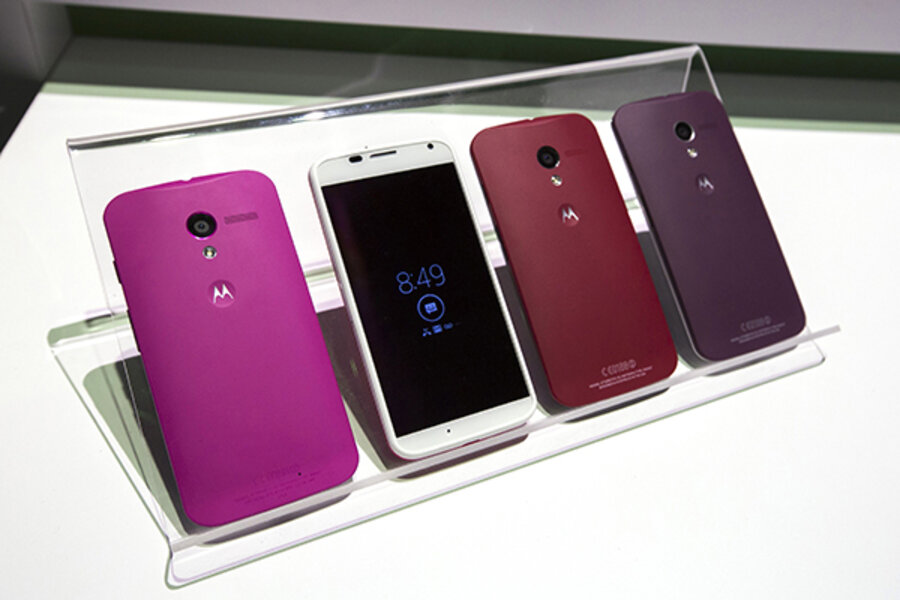Moto X: The first true Google/Motorola phone is unveiled
Loading...
Motorola Mobility announced the much-hyped (and much-leaked) Moto X smart phone on Thursday: a slim, 4.7-inch handset available in a staggering array of colors and textures. The Moto X is clearly different from Motorola’s Droid line of phones. Droids are jammed with top-of-the-line specs and a fairly aggressive aesthetic, whereas the Moto X uses mid-range technology but seems designed to age gracefully, remaining pleasantly usable for the duration of a two-year contract.
Google bought Motorola 14 months ago, and the Moto X is the first phone on which the companies have truly worked together. That collaboration is evident in the Moto X’s software. It’s not a pure Android experience, but it’s about as close as they come -- Motorola’s design touches are very minimal. Bafflingly, the phone ships with Android 4.2.2, which is not the latest version of the "Jelly Bean" software.
Nifty Moto X software flourishes include “active display,” a way to quickly show information without requiring the user to turn the phone on, unlock it, and go to the notification center. “Imagine you’re at a meeting and turn the phone face-up to see time and notifications,” Motorola executive Rick Osterloh said at the phone’s New York launch. “You can touch to see more details and get to other notifications.” The phone uses an OLED display (more about that below), which means it can light up specific portions of the display while showing information.
The Moto X also has the ability to respond only to a user’s voice (and not to others’). You “train” it by repeating a phrase three times, after which it theoretically will be able to navigate to an address, make calls, and do other tasks at your behest. It can also launch its camera app when you flick the phone a certain way (think of the motion you’d make quickly opening a doorknob), but early reports say that feature doesn’t always work.
On the hardware front, the Moto X sports a 4.7-inch OLED screen, a modified Snapdragon S4 processor, and a slightly convex profile. Tech journalists who’ve held it say it feels much smaller in the hand than other 4.7-inch phones, owing to its exceedingly thin bezel. The screen itself has a resolution of 720p -- Motorola execs says they considered using a higher-resolution display, but that it wouldn’t have looked much different at that size, and would have clobbered the phone’s battery life.
Those tired of having a phone that can’t last through the day without a recharge will probably feel that the screen tradeoff is worth it: Motorola says the Moto X’s battery will last an entire day -- not an 8-hour workday, but a full 24 hours. If that’s true, it’d set a high-water mark for other handset companies.
The Moto X comes in 16GB or 32GB of storage, and users can customize the phone’s front, back, and accent colors (the back plate comes in 18 different colors and textures, but oddly, only AT&T customers have access to the full range). Motorola says that the phone is engineered and assembled in the US -- specifically, at a plant in Fort Worth, Texas -- though that’s only true for phones ordered by American customers.
The Moto X will be available on all four major US carriers at the end of August or beginning of September, at $199 for a 16GB or $249 for a 32GB model. Early reports are positive: The Verge called the Moto X “fast, smooth, and powerful” in its show following the event, and Joanna Stern at ABC News describes it as “a highly customizable phone with a few unique software tricks.”
What do you think of the Moto X? Let us know in the comments section below.
For more tech news, follow Jeff on Twitter: @jeffwardbailey.






